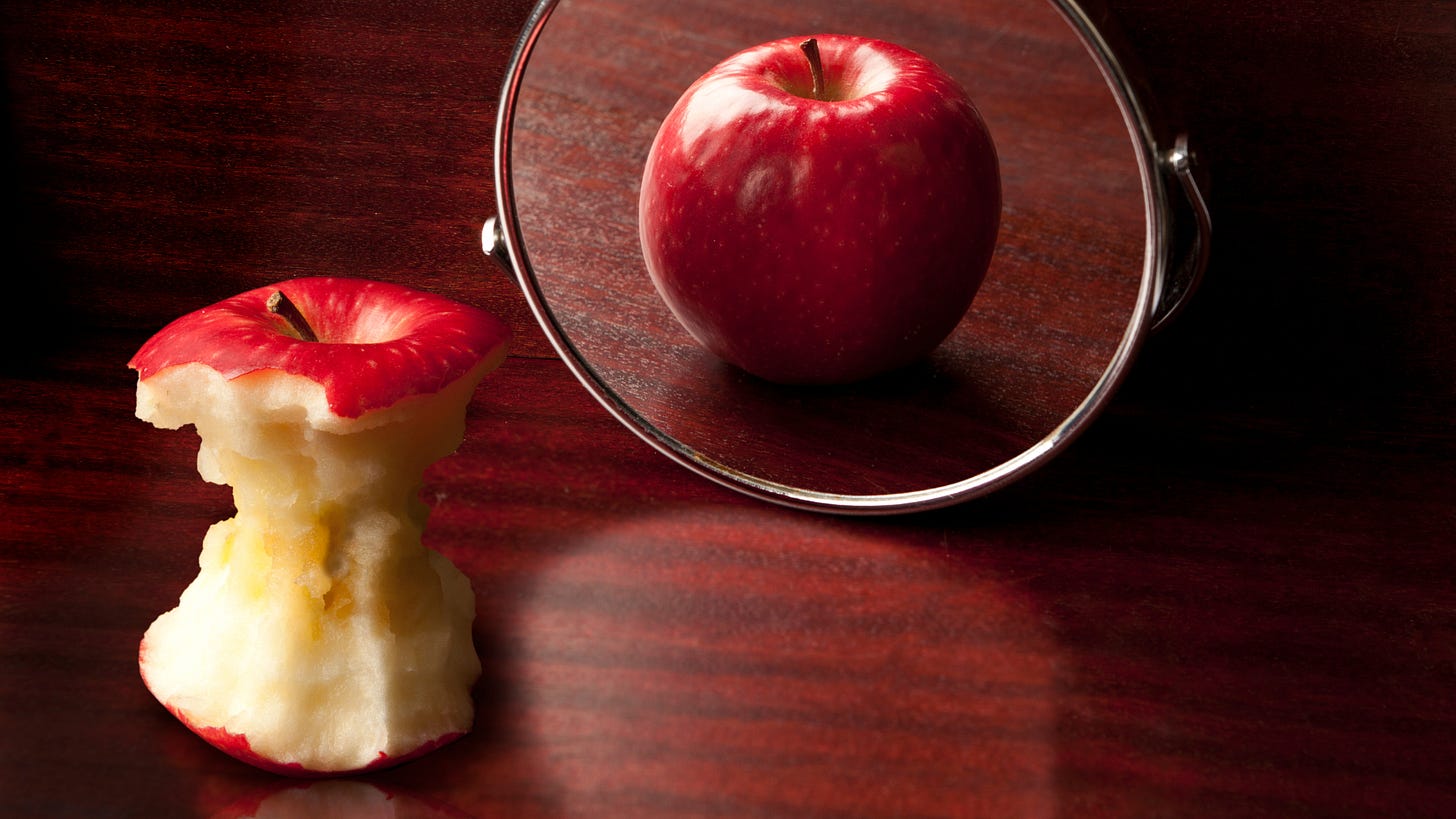"But I Look Normal!": Anosognosia & Body Dysmorphia In Anorexia Nervosa
"Thin person sees fat person in mirror" is not necessarily how it works.
(This article specifically discusses an experience happening in underweight people with Anorexia Nervosa (AN), which is a minority of people with eating disorders. Most people with eating disorders are not underweight, and ‘classical’ AN with significant emaciation as a consequence is a rarer manifestation of an eating disorder.)
We’ve all seen it: the illustration of a thin person (usually an emaciated, young, white female) analysing herself in the mirror, with a much larger version of herself looking back. Before I developed the illness myself, I thought people with AN must have some kind of visual disturbance. I believe the intention of this illustration is to convey body dysmorphia to a lay audience, communicating that people with AN lack a realistic perception of their own body. Fair enough - except a more accurate representation would, for many, be an ‘average-sized’ person looking back. Let me explain why.
(If not illustrated by a person, the phenomena described above might be illustrated by an apple. So many apples in eating disorder stock photography.)
Keep reading with a 7-day free trial
Subscribe to Let's Recover🍕 to keep reading this post and get 7 days of free access to the full post archives.




